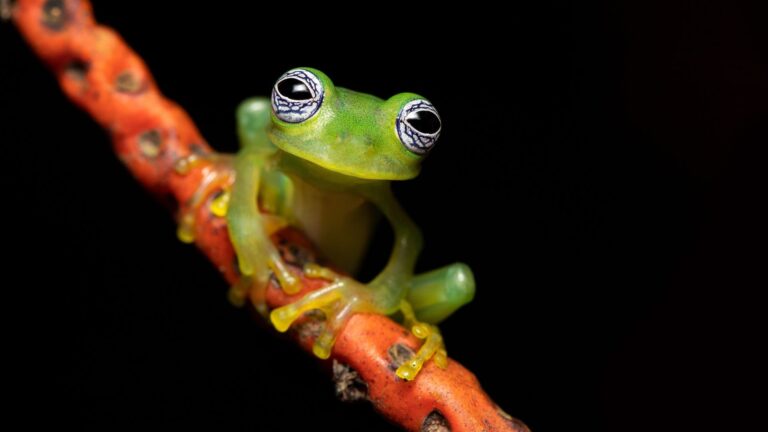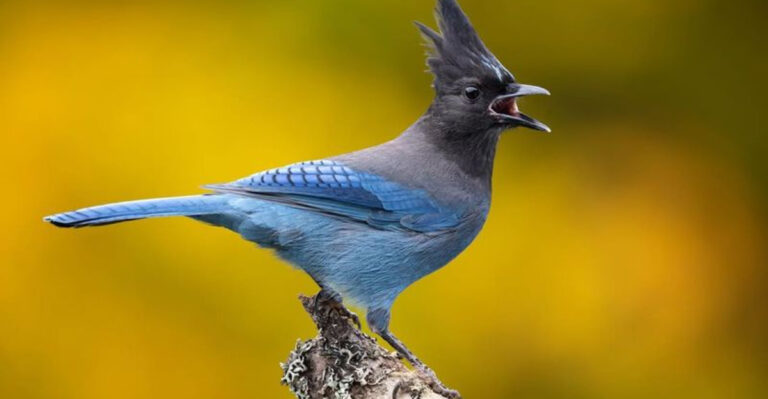12 Symptoms Of Stomach Pain In Cats Every Owner Should Recognize
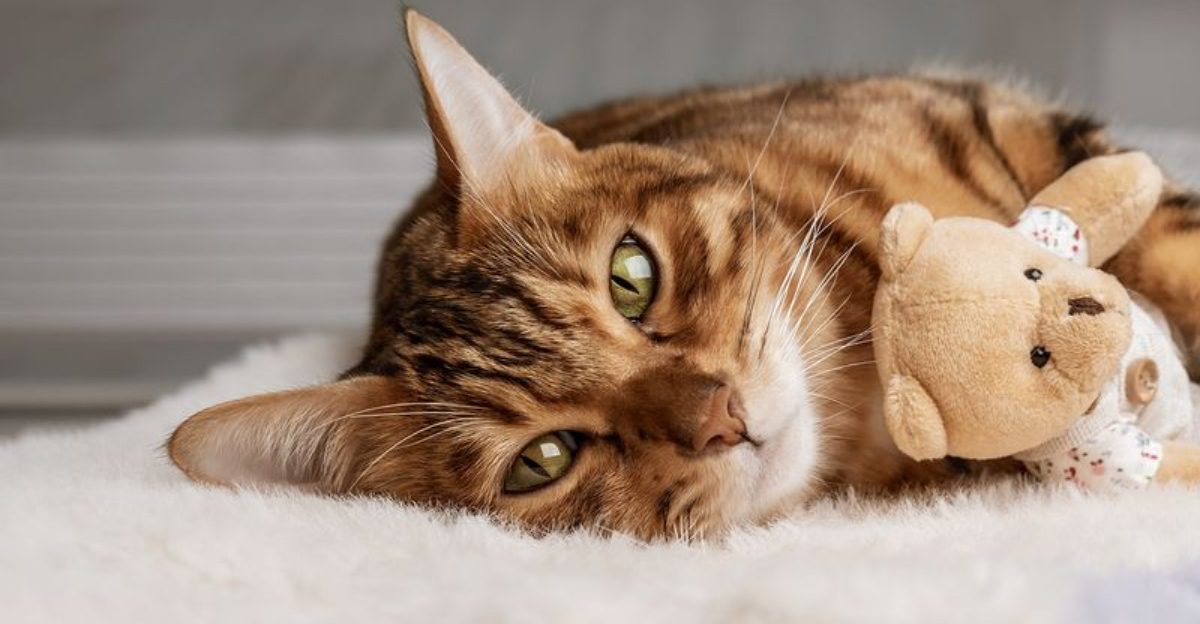
Stomach pain in cats can be tricky to identify since they often hide their discomfort. As a pet owner, it’s important to recognize the signs early to ensure your cat gets the necessary care. Symptoms of stomach pain can range from subtle changes in behavior to more obvious physical signs.
Cats may experience digestive issues, bloating, or even nausea, which could be caused by a variety of factors like food intolerance, infection, or underlying health problems.
In this guide, we’ll cover 12 key symptoms that indicate your cat may be experiencing stomach pain, helping you respond quickly and appropriately for their well-being.
1. Vomiting
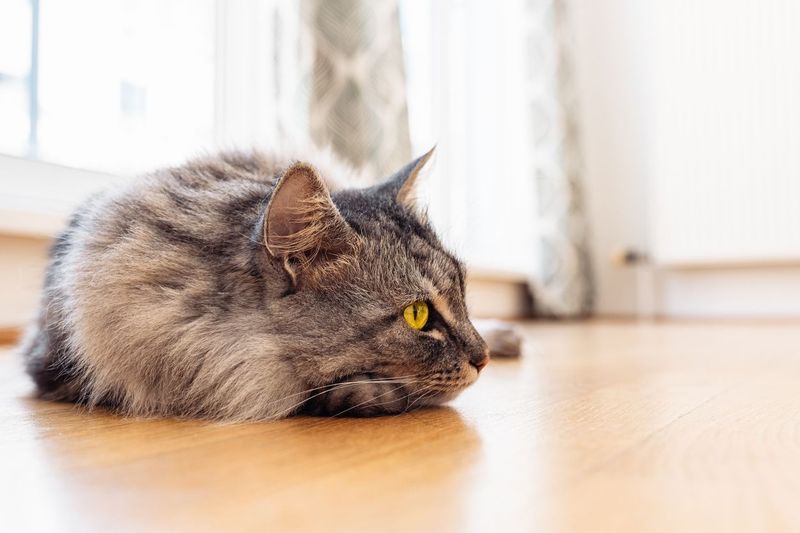
Vomiting is one of the most noticeable signs that your cat may be dealing with a stomach ache. When your cat begins to vomit frequently, it’s often an indication that something isn’t quite right in their digestive system. While occasional vomiting can be normal for cats, especially when they are expelling hairballs, frequent episodes warrant a closer look.
However, there are various other causes behind vomiting. This can range from ingesting something toxic or non-digestible to more complex issues like gastrointestinal infections or even food allergies.
As a pet owner, it’s essential to observe the frequency and content of the vomit, noting any patterns that might help your veterinarian in diagnosing the underlying issue.
2. Lethargy
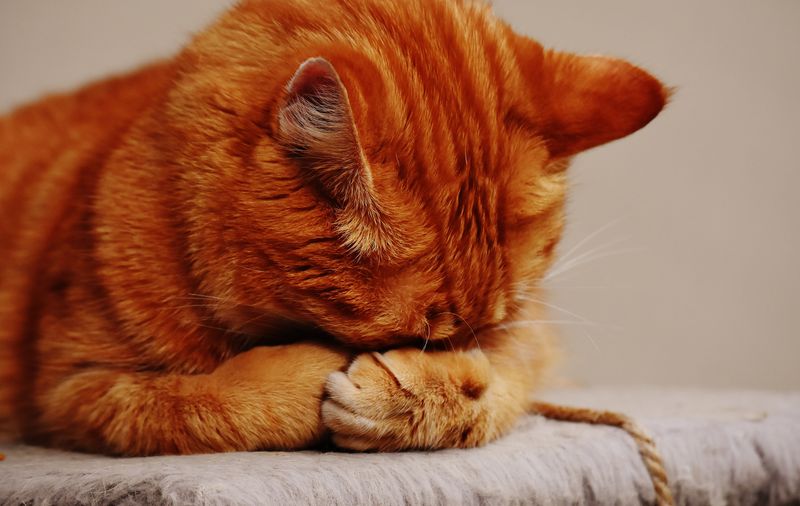
Lethargy in cats is a subtle but unmistakable sign of discomfort or illness. When your usually active and playful cat suddenly becomes slow and disinterested in activities they once enjoyed, a stomach ache might be the culprit. Lethargy often accompanies other symptoms like vomiting or diarrhea, providing further indication of digestive distress.
But, there are more behavioral changes you might notice in a lethargic cat. They may spend more time sleeping, show reluctance to move, or appear weak and fatigued. These signs suggest that your cat is conserving energy and possibly battling an internal issue.
So, consider how to respond when lethargy sets in. Make their environment as comfortable as possible, providing easy access to their favorite resting spots. Ensure they have fresh water nearby and encourage light activity if possible.
However, it’s crucial to contact your veterinarian to rule out any serious conditions, particularly if lethargy persists or is accompanied by other worrying symptoms.
3. Loss Of Appetite
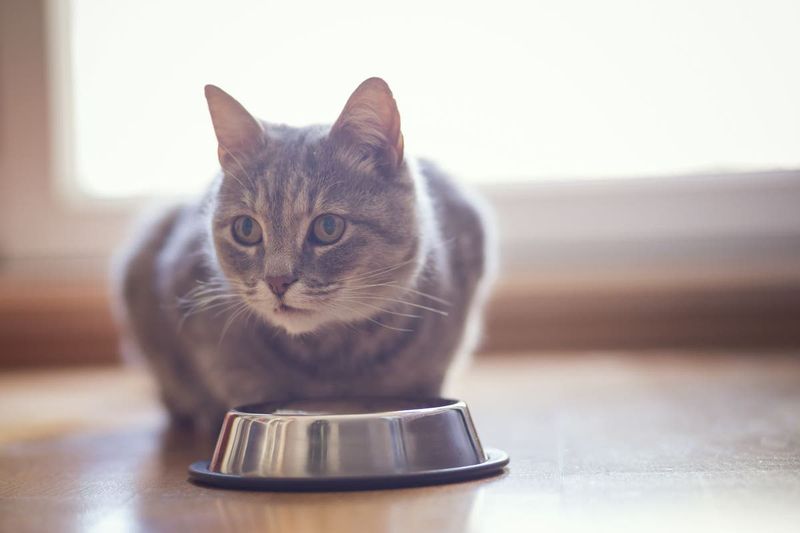
A loss of appetite in cats is a red flag that something might be troubling their stomach. When your cat starts to ignore their meals or barely picks at their food, it may indicate discomfort or pain in the digestive tract. This symptom should not be overlooked, especially if it persists for longer than a day or two.
Cats, unlike some other animals, cannot go without food for long periods without risking significant health issues like hepatic lipidosis, a severe liver condition. Observing their eating habits closely can provide insights into their overall health.
How to address this issue? First, rule out environmental changes that might affect feeding, such as a new pet or a change in routine. Try offering their favorite foods or warming their meals to enhance the aroma.
If these attempts fail to entice your cat to eat, a visit to the vet is essential to determine the root cause and prevent further complications.
4. Diarrhea
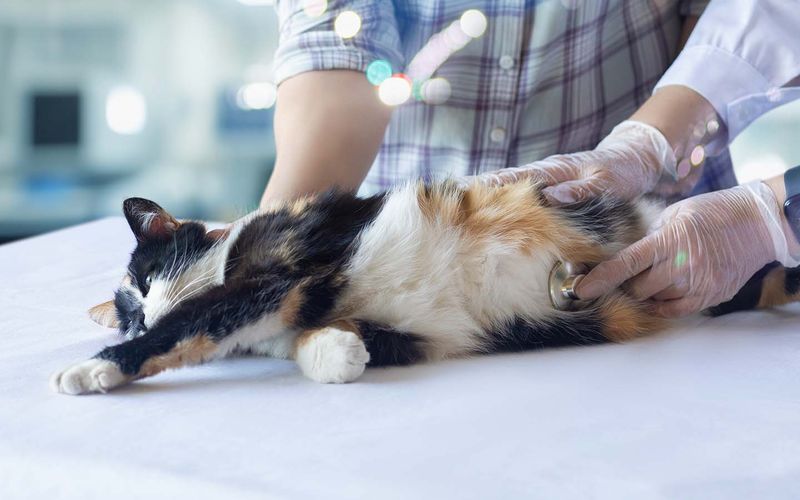
Diarrhea is not just messy; it is a clear sign that something is amiss in your cat’s digestive system. When your cat experiences diarrhea, it often signifies an upset stomach that requires attention. This condition can lead to dehydration and nutrient loss, making it crucial to address promptly.
The potential causes of diarrhea can range from dietary indiscretions, such as consuming spoiled food, to infectious agents like bacteria or parasites.
Allergies or intolerances to certain ingredients in their diet can also manifest as diarrhea. Recognizing these triggers can help in managing your cat’s diet effectively.
It’s best to begin by ensuring your cat stays hydrated, offering them fresh water and possibly an electrolyte solution. Monitor their progress closely, and seek veterinary advice if diarrhea persists beyond a couple of days or is accompanied by other symptoms.
5. Excessive Grooming
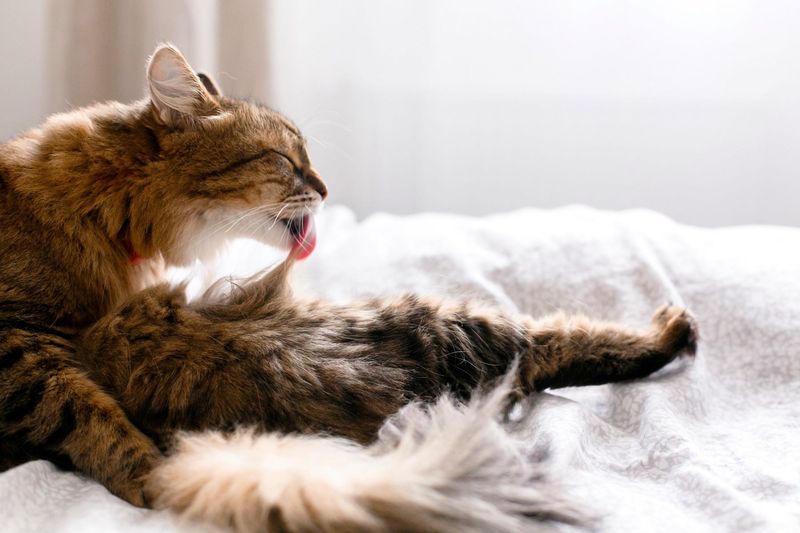
While cats are known for their grooming habits, excessive grooming, particularly of the abdominal area, can signal a stomach ache. When your cat focuses an unusual amount of attention on this area, it may be attempting to soothe discomfort internally.
Excessive grooming often indicates itching, irritation, or pain that the cat is trying to alleviate. This behavior can lead to hair loss or skin irritation if left unchecked, compounding the problem.
Providing stress-relief options like play or environmental enrichment may also decrease compulsive grooming. If excessive grooming continues, consulting a vet is wise to rule out underlying health issues.
6. Hiding
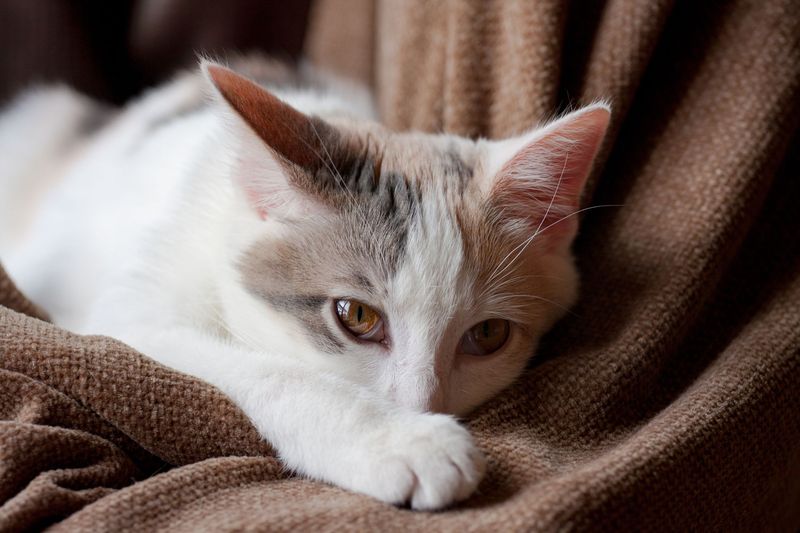
Hiding is a natural behavior for cats when they feel unwell, making it a potential sign of stomach ache. When your cat suddenly disappears to secretive spots around the house, it might be trying to cope with discomfort or stress.
Cats instinctively seek solitude when feeling vulnerable, a trait inherited from their wild ancestors who hid from predators when feeling weak. This behavior can be triggered by various factors, including gastrointestinal distress.
When your cat starts hiding, firstly ensure they have safe, comfortable spaces to retreat to, reducing stress and making them feel secure.
However, be observant and check on them periodically without disturbing their peace. Persistent hiding, especially if accompanied by other symptoms, should be brought to a vet’s attention to determine if a more serious condition is present.
7. Increased Vocalization
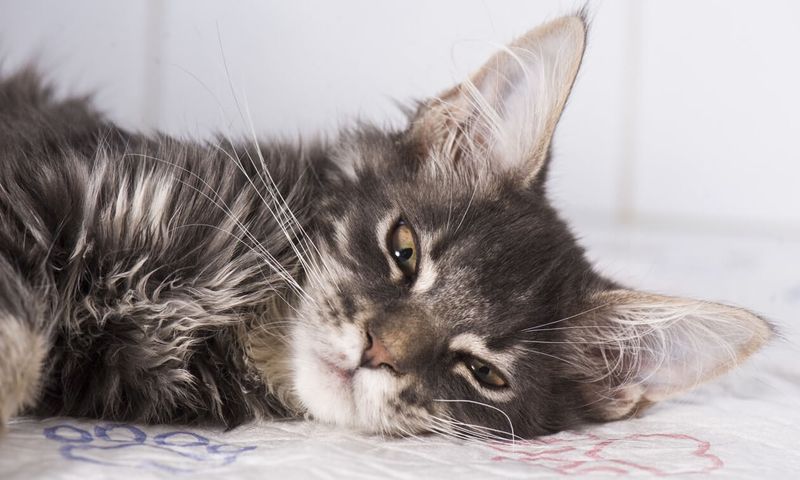
Increased vocalization in cats can be an auditory clue that something is wrong, often indicating discomfort such as a stomach ache. When your cat becomes more vocal than usual, it may be expressing distress or seeking attention for its discomfort.
Cats may meow more frequently or with a different tone when they are in pain. This behavior can be particularly noticeable if your cat is usually quiet. An increase in vocalization can occur alongside other signs, helping to paint a broader picture of their health status.
Paying attention to the timing and circumstances of the vocalization can provide valuable context. Engage with your cat to ascertain if they are seeking comfort or relief. While this behavior alone does not confirm a stomach ache, combined with other symptoms, it warrants a visit to the vet to explore potential causes and ensure your cat’s well-being.
8. Posture Changes
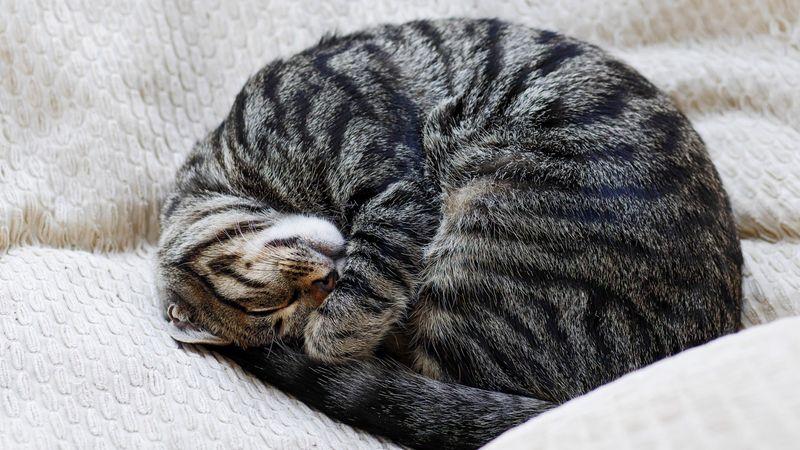
Changes in posture can be a subtle yet telling sign of a stomach ache in cats. When your feline friend adopts unusual positions, like a hunched back or crouching, it might indicate abdominal discomfort. Recognizing these changes early can be crucial in addressing their health needs.
A cat experiencing stomach ache may arch their back more than usual or tuck their legs under their body, attempting to alleviate internal pressure or pain. These positions can help you assess their level of discomfort.
Gently observe your cat and provide a comfortable space for them to rest. Encourage them to move gently to avoid stiffness. If these postures persist or are accompanied by other signs such as vomiting or lethargy, it’s advisable to consult a veterinarian to explore possible causes and appropriate treatments.
9. Purring Excessively
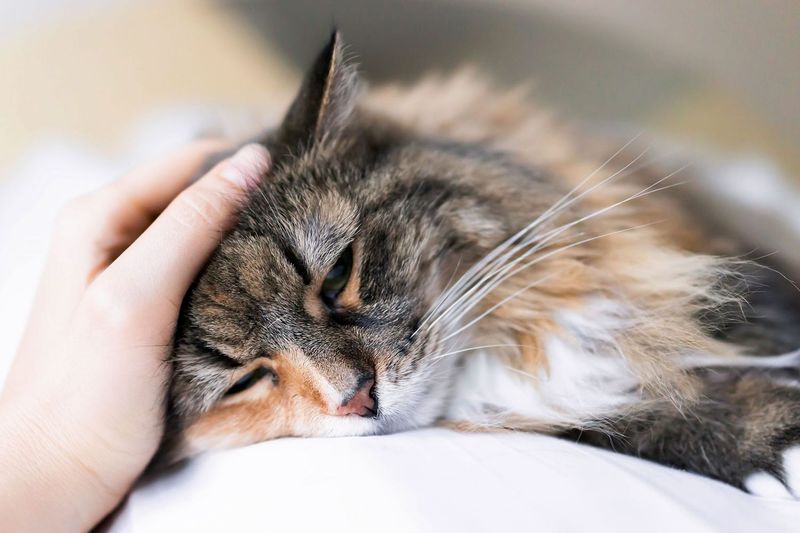
While purring is often associated with contentment, excessive purring can surprisingly indicate discomfort, such as a stomach ache. When your cat begins to purr more than usual, particularly in situations where they typically wouldn’t, it might be a sign of distress.
Cats sometimes purr to comfort themselves when they are in pain, using the vibrations as a form of self-soothing. This can be confusing for owners who associate purring solely with happiness.
How to interpret excessive purring? Observe your cat’s overall behavior and look for accompanying signs like lethargy or changes in appetite.
While purring alone doesn’t confirm a stomach ache, in combination with other symptoms, it provides a clearer picture. Consulting with a vet can help determine whether this behavior is linked to a health issue that requires intervention.
10. Restlessness
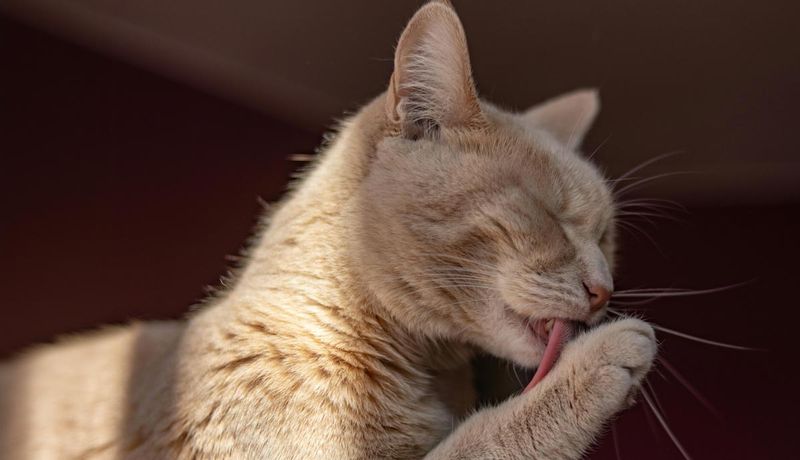
Restlessness in cats can be a sign that they are experiencing discomfort, such as a stomach ache. When your cat can’t seem to settle down, pacing or moving from spot to spot, it may be trying to find relief from an internal issue.
Firstly, let’s delve into what restlessness looks like. A restless cat may frequently change its sleeping position, move around the house more than usual, or appear anxious. This can be particularly concerning if your cat is normally calm and composed.
Next, consider how to address restlessness in your cat. Try to create a calm environment with minimal disturbances, providing a quiet space for them to relax. Offering gentle affection or engaging them in light play might help ease their anxiety.
However, persistent restlessness, especially when coupled with other symptoms like vomiting or diarrhea, should prompt a visit to the vet to rule out any serious conditions.
11. Frequent Lip Licking
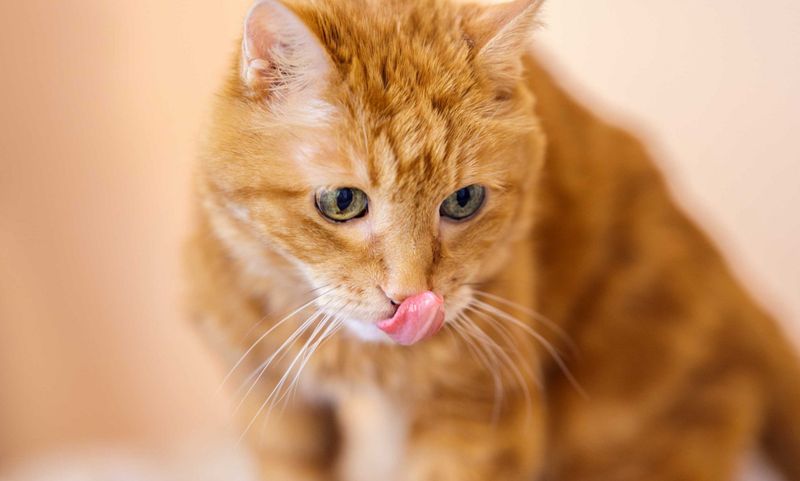
Does your cat seem to lick its lips more than usual? This behavior can be a subtle indicator of an upset stomach. Cats often lick their lips when they feel nauseous or are attempting to alleviate discomfort.
Observe if this is accompanied by other unusual behaviors. It may be a standalone event or a sign of something more significant.
If your cat exhibits this behavior persistently, consider consulting a veterinarian. Addressing this early can help prevent further complications, ensuring your cat stays healthy and comfortable.
12. Unusual Eating Habits
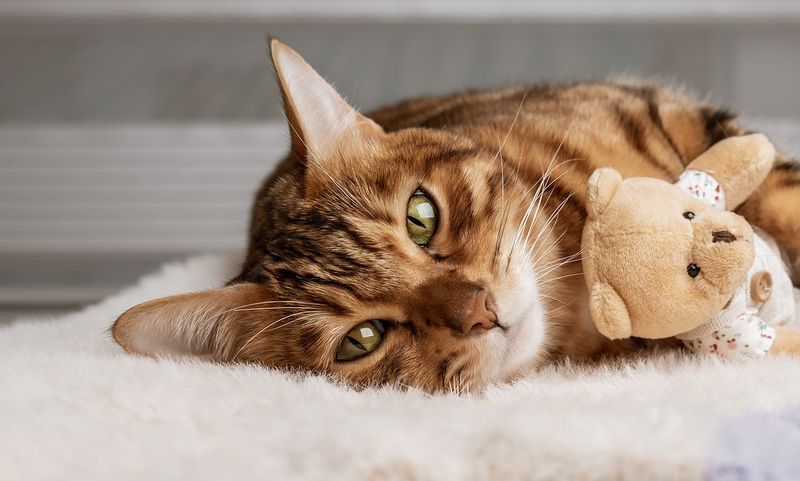
Noticing your cat approaching food with hesitation? This change might be related to stomach discomfort. Cats in pain may show reluctance to eat, often sniffing their food without taking a bite.
This behavior might be a response to the discomfort felt after eating previously. Monitor for patterns and frequencies to gauge severity.
Persistent changes in eating habits warrant a vet visit to rule out any underlying issues. Timely intervention can ensure your pet’s digestive health remains intact and prevent any long-term complications.



